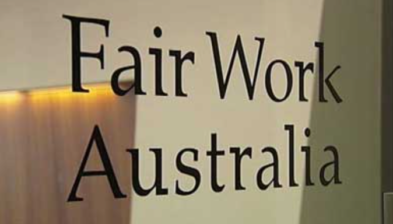Could Netflix’s culture even exist in Australia? - HRM
By Alan J. McDonald

What happens when a culture of transparency is taken to extremes? HRM examines the performance practices at Netflix and whether the company could legally operate in Australia.
Organisational transparency is generally considered a good thing for workplace culture. It helps to ensure the right people are recruited and fosters a culture of inclusion and trust. But is it possible for transparency to go too far, and lead to ritualistic and cult like practices?
This is what Netflix has been accused of. The organisation has experienced rapid growth over the last decade and has added 2000 employees to its ranks this year alone.
“As you scale a company to become bigger and bigger how do you scale that kind of culture?” asked Colin Estep, a former senior engineer at Netflix in a Wall Street Journal (WJS) expose (paywall) – featuring insights from 70 former and current staff members. In other words, can the high performance tactics used to get an organisation off the ground be viable when the company balloons in size?
The answer: perhaps, with some difficulty. Another intriguing question is whether, given Australia’s workplace laws, the streaming giant could export its culture to this country.
Questionable practices
The specific aspects of Netflix that might not work down under are a few of their stranger policies.
The first is the practice of ‘sunshining’. In June this year, Netflix’s chief communications officer Jonathan Friedland made the news for using the ‘N-word’ in a meeting, while trying to make a programming point about the use of offensive language. To make up for his transgression, Friedland participated in sunshining – which is where employees publicly admit to misdeeds and apologise in front of a group of people. Unfortunately for Friedland, the sunshine didn’t absolve him and he was fired.
Then there is the performance management technique, the ‘keeper test’, where managers are asked to assess employees by whether they would fight to keep them. Managers have said that they felt pressure to be harsh with this test, or risk “looking soft”.
Netflix CEO Reed Hastings has reportedly applied the keeper test several times. Former chief product officer Neil Hunt, one of the company’s first employees, creator of the program curation algorithm, and decades long friend to Hastings – succumbed to it just last year. Hastings told Hunt that as the company had grown and expanded, someone else was more suited to the position.
According to the WJS, in a recent meeting attended by Netflix public relations executives, one such executive says he fears being fired on a daily basis. When asked how many people felt the same, a number of people concurred.
One of the more common transparency practices of Netflix is around pay. The streaming service entrusts executives at or above the director level with very sensitive information – including subscription data, contracts and the salaries of each employee. To Netflix’s credit, they reportedly offer double the standard pay rates for new recruits and grant raises per annum of the six figure variety.
The organisation has offices throughout the US and Asia, as well as two European bases in London and Amsterdam. The Netherlands-based arm, however, encountered problems trying to import the culture and make it work with local laws.
Legally speaking
So, if Netflix was to open shop down under, would the culture align to the Fair Work Act? HRM asked Trent Hancock, principal lawyer at employment law firm McDonald Murholme, to weigh in on some of their practices.
Netflix’s bluntness in the delivery of feedback about performance and conduct can be a good thing, says Hancock. “It allows employees to know where they stand in terms of their employment and how they might improve on any deficiencies that the employer perceives,” he says. “That kind of blunt feedback can also serve as defense in a termination related claim.”
But, says Hancock, blanket policies like sunshining can be dangerous, as they don’t cater for employees with mental health issues. Putting vulnerable employees under that type of pressure could leave the organisation open to a worker’s compensation claim if the feedback isn’t provided in a reasonable way.
The sunshining practice could also constitute bullying if a direction is being issued that employees must participate in the process. “In Australia, workplace bullying is essentially comprised of three elements: repeated behaviour that’s unreasonable and that poses a risk to occupational health and safety. So the practice could certainly delve into this territory,” says Hancock.
In terms of the keeper test, Hancock says that the organisation could be at risk of exposing manager bias. “If a manager wants to dismiss an employee for a reason that is unfair or unlawful, and speaks about it openly in the workplace, the employee could rely upon this information in a termination-related claim,” he says.
Cultural fit also isn’t reason enough to dismiss an employee – but there are some concessions. “The idea that an employee is not a good culture fit needs to be related in some way to their conduct, for example, if they don’t comply with policies and procedures, which can give rise to a valid reason to dismiss,” says Hancock.
“Similarly, if an employee is not a good cultural fit because they interact poorly with their colleagues, that then becomes a performance issue, which can also be grounds as a valid reason for dismissal.”
If the dismissal for reasons of culture fit were to happen during the first six months in a large business of first 12 months in a small organisation, this could be permissible as an employee can’t submit an unfair dismissal claim during this timeframe.
Hancock also says the apparent immediacy in which employment is terminated could lead to a heightened level of unfair dismissal claims. He cites an example of this from the WSJ article, where a former employee claims to have been perceived as a star performer one day, and out the door the next – seemingly without warning and without being granted the opportunity to improve their performance.
But, as the organisation appears to pay generous severance payments, this could serve as a saving grace. “Ordinarily the condition to a receipt of a payment like that is the execution of a release agreement, in which the employee agrees not to take any action against the company, which could reduce the liability in claims made against Netflix,” he says.
Similarly, the reportedly high paychecks that Netflix pays seems to suggest that employees will tolerate more. “In Australia, most employees who earn over $145,000 per annum aren’t protected from unfair dismissal. Under those circumstances, for the employees that Netflix would have in Australia that earn over that amount, the company wouldn’t need a valid reason to terminate their employment, as they can’t raise an unfair dismissal claim.”
A culture of fear and where loyalty doesn’t seem to exist is kind of counterintuitive to one of the usual aims of transparency – to establish trust. Netflix’s culture may currently be one of high performance, but as the organisation continues to grow, they may just need to change tack.
Reference: ‘Could Netflix’s culture even exist in Australia?‘. HRM, Tuesday 30th October 2018.
-
 High Uni Fees but Academics Underpaid
High Uni Fees but Academics Underpaid -
 Reserve Bank interest rake hike and job losses
Reserve Bank interest rake hike and job losses -
 Labour shortages, inflation, recession looming and workplace disputes
Labour shortages, inflation, recession looming and workplace disputes -
 Paid family and domestic violence leave is to be introduced in Australia: here’s how it affects you
Paid family and domestic violence leave is to be introduced in Australia: here’s how it affects you -
 Virtual assistants; mumpreneurs’ secret weapon
Virtual assistants; mumpreneurs’ secret weapon -
 McDonald Murholme guide to the Fair Work Act – The Australian
McDonald Murholme guide to the Fair Work Act – The Australian